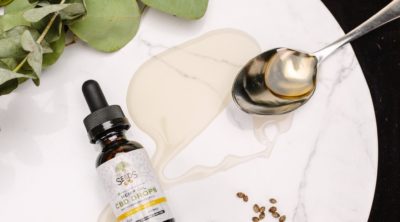
The elderberry shrub is a much revered and treasured tree for its medicinal value. Its flowers and berries have healing powers for a variety of illnesses. Read more to learn how this shrub’s fruit can help with the flu and common cold.
Blackberries, blueberries, strawberries.. berries are the most versatile fruits to use, with a diverse range of application. While most berries are used in savory and sweet cooking recipes, one berry is very effective as a natural medicine for a number of ailments. This is the elderberry, the berry fruit of the elderberry shrub or tree. It has been used since time immemorial, in nearly every major culture, from the Ancient Egyptians to the American Indians as a cure against diseases. In this article, learn more about this shrub and its effectiveness against influenza, in the liquid form.
The Elderberry and Its Produce
The elderberry tree is a type of shrub found in parts of Europe, Asia, South and North America. Its shrub family name is Sambucus. There are over 20 species of the elderberry and at least 6 species exist in North America. These shrubs flourish in cool and not-too-humid climates, with moist and dry soil types to flourish. In the United States, two main species of the elderberry are the Sambucus Canadensis or American Elder and the Sambucus Racemosa. Of these, the American Elder is prized for its medicinal properties, while the Racemosa, with its distinctive red berries is not recommended for consumption, as it has toxic properties and can be poisonous.
The fruit of this shrub is a cluster of small berries, in bluish-black, purple, black and red colors. The flowers, which are white and flat with 5 main petals, are used to make cordial or syrup. They are even added as a cooking ingredient to muffins, pancakes and cakes for their sweet flavor. The berries are used to make marmalade, cordials and juice and pie fillings. The berries should be dark purple, blue or black in color, firm to the touch. Green, red and soft or mushy berries can make a person nauseous. The leaves, bark, roots and branches of the elderberry tree are not meant for human consumption and are highly toxic. The berries need to be cooked before using them in any recipes or for eating. They are not meant to be eaten raw, as they have a slightly bitter and tangy taste and can create a toxic effect.
Elderberry Juice for Flu
The elderberry is prized for the medicinal properties of its berries. In Colonial times, it was aptly titled, “the medicine chest of the common people”. Among the many elderberry juice benefits is its use as a home remedy for the common cold and flu. And no wonder, the nutrient and vitamin make-up of the berries is ideal for battling such viral infections. Some key points in favor of imbibing elderberry juice for flu and cold are:
✤ Vitamin C, the vitamin which boosts the immune system and has powerful anti-oxidizing properties, has a high content level in elderberry. In fact the elderberry has the highest levels of vitamin C among other berries like grapes and blackcurrants.
✤ Another helpful nutrient, vitamin A is also present in high levels. Vitamin A helps in improving eyesight and more importantly, maintaining the body’s immunity levels.
✤ In addition, elderberries contain excellent amounts of various vitamin B-complex nutrients such as niacin, riboflavin and vitamin B6. The dark purple or black color of the elderberries is due to the presence of anthocyanins, which act as an antioxidant and aid in chest and nasal congestion.
✤ The elderberry is also a good mineral source. It has surprisingly high levels of calcium and phosphorus, with decent amounts of iron and magnesium. It really scores with its potassium content levels, rivaling that of the banana. Potassium aids in body metabolism functioning and maintaining fluid and pressure balance within the body.
✤ The main cause of influenza and viral infections is a weak immune system, which renders the human body vulnerable to the attack of a viral or bacterial agent. The combination of vitamin C and vitamin A make for a powerful antioxidant with a high potential to strengthen and re-energize the immune system, thus repairing the damage done by the germs and encouraging the body to fight back.
To sum up, below is a tabular chart of the elderberry’s nutritional makeup.
Serving Size: Raw Elderberries 1 cup (145g)
| Carbohydrates | 26.7 g |
| Fat | 0.7 g |
| Protein | 1.0 g |
| Vitamin C | 52.2 mg |
| Vitamin A | 870 IU |
| Phosphorus | 56.6 mg |
| Potassium | 406 mg |
| Iron | 2.3 mg |
| Calcium | 55.1 mg |
| Magnesium | 7.3 mg |
At present, though there is no official stand or opinion on the effectiveness of elderberry juice for flu, research and studies are being conducted into its use, especially for immunity affecting diseases like AIDS and the H1N1 virus. Studies conducted in 1995 and 2004, have shown that elderberry juice reduces flu symptoms and 90% of influenza patients heal faster. It also acts as a preventive medicine, reducing the risk of infection. Cheap cost of production and ease of availability could make elderberry juice extract, an alternative cure for the flu. However caution should be taken in its production and dosage. The source of the juice extract should be verified as authentic and to be trusted. Elderberry juice should not replace any specific medication or go against a physician’s advice. Before taking any such herbal remedies, consult a doctor for safety against side effects and allergies.


